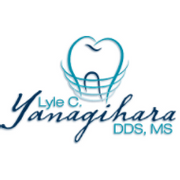
Known as orofacial clefts, cleft lips and palates are nonfatal issues that are present at birth. Help from an oral surgeon is typically needed to correct the problem, so children with cleft palates and lips can grow up with beautiful smiles. If your little one was born with either orofacial cleft, here’s more information about these common conditions.
Frequently Asked Questions About Cleft Palates & Lips
What are they?
A cleft lip occurs when fetal lip tissue doesn’t join together correctly during gestation. Cleft lips range in size, depending on the amount of tissue present.
A cleft palate results from tissue remaining separate instead of joining together to form the roof of the mouth. Some infants feature cleft palates toward the front of their mouths only, while others have clefts at both the front and back sections of the upper mouth.
What causes cleft lips and palates?
 The reason for orofacial problems remains unknown; however, genetics are believed to play a role. Pregnant women can minimize the risk of this issue by not smoking, taking certain medications, drinking alcohol, and taking drugs throughout their pregnancies. Women who are diabetic also have a higher risk of giving birth to children with cleft lips and palates.
The reason for orofacial problems remains unknown; however, genetics are believed to play a role. Pregnant women can minimize the risk of this issue by not smoking, taking certain medications, drinking alcohol, and taking drugs throughout their pregnancies. Women who are diabetic also have a higher risk of giving birth to children with cleft lips and palates.
Do they contribute to health problems?
Cleft palates create breast feeding issues because the roof of the mouth can’t prevent food from entering the nasal cavity and often they cannot create suction. Additionally, children with cleft palates can experience fluid buildup in their ears due to lacking fluid drainage in the middle ear, which can cause infections and hearing loss without correction.
Dental issues include gum problems, as well as a crooked and misshapen smile. Certain kids may also develop teeth under-sized or too many or too little teeth.
How are orofacial issues treated?
Oral surgeons recommend fixing cleft lips and palates within the first 12 and 18 months of life. Cleft lip surgery detaches and rearranges lip muscle tissue to create a uniform result, while cleft palate surgery involves detaching and repositioning the palate to close the roof of the mouth. A cleft in the jaw bone will not allow for the eruption of teeth. Correcting this cleft with a cleft bone graft before tooth eruption may save teeth vital for chewing..
If you think your little one is a good fit for these procedures, turn to Lyle C. Yanagihara DDS, MS, in Honolulu, HI. This skilled oral surgeon and his team will assess your youngster’s mouth to determine the best plan of action. They’ll work diligently to restore their smile and track the recovery to ensure everything heals properly. Get more information about their services online, or call (808) 973-1433 to schedule a consultation.
About the Business
Have a question? Ask the experts!
Send your question

